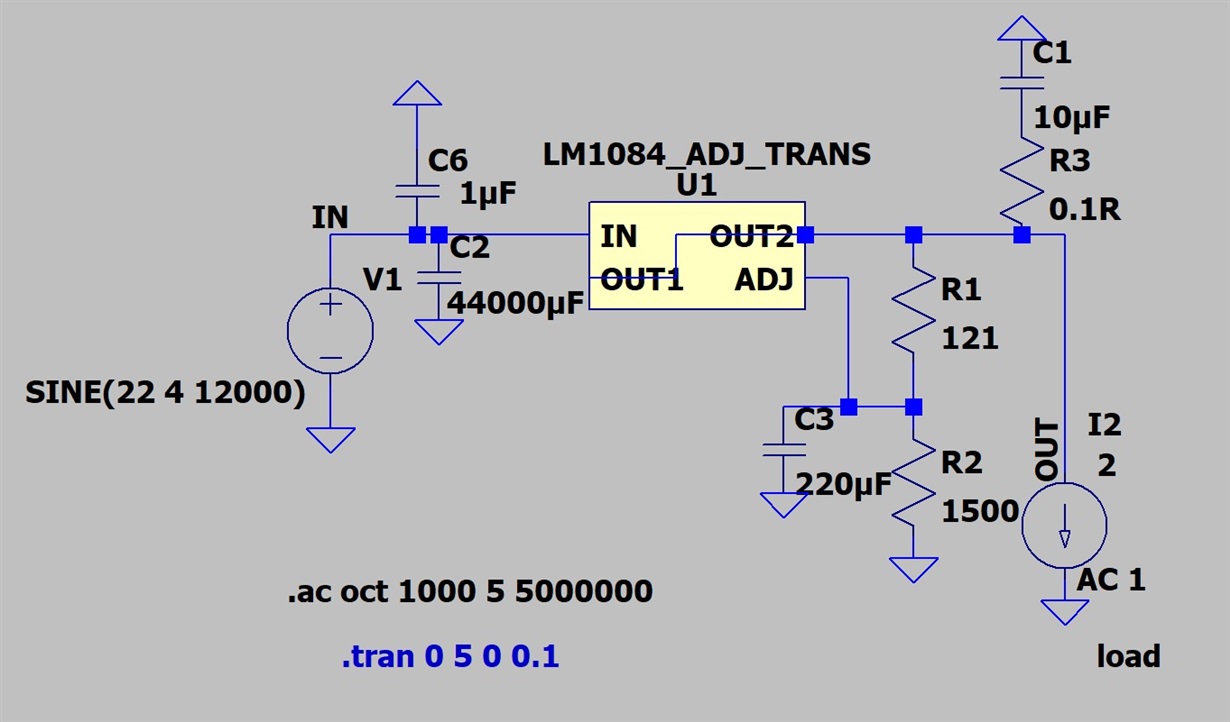Hello,
Several questions that I would be very grateful to have answered:
1) For the LM1084-ADJ, what is the approximate output impedance across the audio band (20Hz-20Khz)
2) The datasheet specifies an electrolytic or tantalum capacitor on the output of the LM1084 as a large enough ESR is necessary for regulator stability. Would an appropriately sized RC snubber in parallel with another low ESR capacitor provide the necessary zero pole at 500khz for regulator stability? If yes, how would I determine the required RC snubber component values?
3) If an RC snubber is not able to provide the necessary zero on the output, what ESR is sufficient for an electrolytic capacitor in order to assure stability? If low ESR electrolytic capacitors are used, is there a formula that allows calculation of the sufficient ESR of the capacitor relative to the capacitance value?
Thanks in advance



